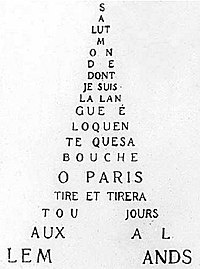
Guillaume Apollinaire was a French poet, playwright, short story writer, novelist and art critic of Polish descent.
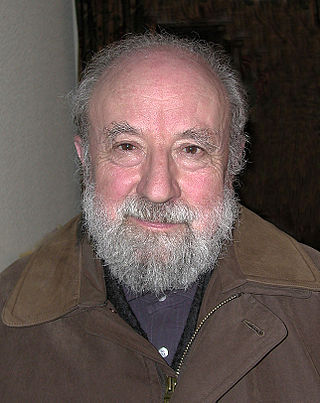
Michel Butor was a French poet, novelist, teacher, essayist, art critic and translator.
An ideogramme is a form of poetry that relies heavily on typographical elements, design, and layout.
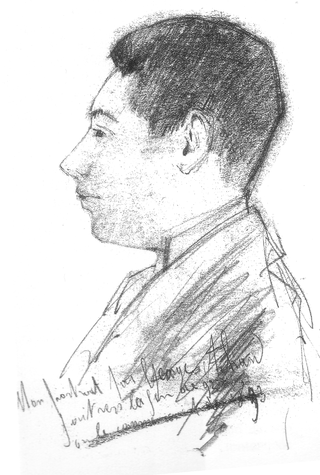
Pierre Albert-Birot was a French avant-garde poet, dramatist, and theater manager. He was a steadfast avant-garde during World War I, through the magazine Sic he created and published from 1916 to 1919. He was a defender of Futurism and Cubism. The Dadaists considered him one of their own, although he never took part in the movement. He declared himself the founder of the ″nunique" school, a literary school of which he was the only master, with no disciples. After the war, he distanced himself from the Surrealists, to whom he had, with Guillaume Apollinaire, given their name, and he created a solipsistic body of work and tried his hand at everything, printing his own books, cultivating the childlike joy of artistic creation, as he himself wrote: ″I find my joy in poetic creation and I find my joy in the creations of my hands. ... All of this is just like a game, I love to play, I keep the kid alive.″ Despite being mocked by the Surrealists for his pretensions to excel in too many arts, and being criticized by Philippe Soupault as an extravagant man without real poetic talent, he earned the praises and friendships of Francis Picabia and Apollinaire who dubbed him Pyrogène ("Pyrogen"), because of his "fiery" temperament as an innovator and disruptor. Later, Gaston Bachelard praised the depth of his philosophical views, thanking him for ″giving the body better consciousness than a philosopher″ and he influenced various poets such as Jean Follain, Pascal Pia, and even today, Valérie Rouzeau.
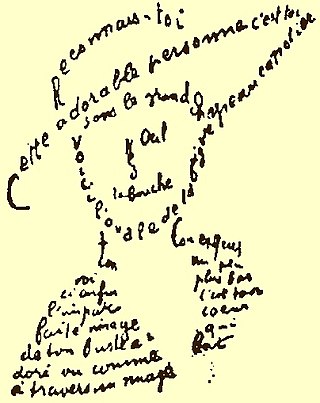
A calligram is a set of words arranged in such a way that it forms a thematically related image. It can be a poem, a phrase, a portion of scripture, or a single word; the visual arrangement can rely on certain use of the typeface, calligraphy or handwriting, for instance along non-parallel and curved text lines, or in shaped paragraphs. The image created by the words illustrates the text by expressing visually what it says, or something closely associated; it can also, on purpose, show something contradictory with the text or otherwise be misleading, or can contribute additional thoughts and meanings to the text.

Pierre Reverdy was a French poet whose works were inspired by and subsequently proceeded to influence the provocative art movements of the day, Surrealism, Dadaism and Cubism. The loneliness and spiritual apprehension that ran through his poetry appealed to the Surrealist credo. He, though, remained independent of the prevailing "-isms", searching for something beyond their definitions. His writing matured into a mystical mission seeking, as he wrote: "the sublime simplicity of reality."

André Salmon was a French poet, art critic and writer. He was one of the early defenders of Cubism, with Guillaume Apollinaire and Maurice Raynal.
André du Bouchet was a French poet.
Nationality words link to articles with information on the nation's poetry or literature.
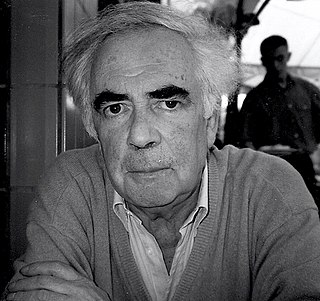
Claude Esteban was a French poet.
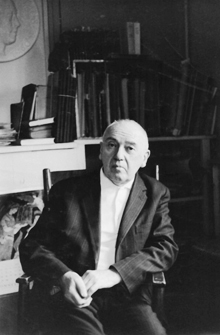
Jean Grenier was a French philosopher and writer. He taught for a time in Algiers, where he became a significant influence on the young Albert Camus.

Lionel Ray is a French poet and essayist.
The prix Guillaume Apollinaire is a French poetry prize first awarded in 1941. It was named in honour of French writer Guillaume Apollinaire. It annually recognizes a collection of poems for its originality and modernity.

Il n'y a plus rien is an album by Léo Ferré, released in 1973 by Barclay Records. The general mood here is dark, both exasperated and desperate.
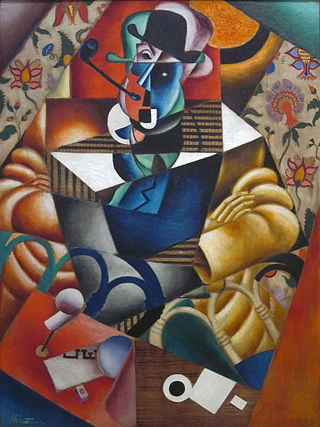
Man with Pipe is a Cubist painting by the French artist Jean Metzinger. It has been suggested that the sitter depicted in the painting represents either Guillaume Apollinaire or Max Jacob. The work was exhibited in the spring of 1914 at the Salon des Indépendants, Paris, Champ-de-Mars, March 1–April 30, 1914, no. 2289, Room 11. A photograph of Le Fumeur was published in Le Petit Comtois, 13 March 1914, for the occasion of the exhibition. In July 1914 the painting was exhibited in Berlin at Herwarth Walden’s Galerie Der Sturm, with works by Albert Gleizes, Raymond Duchamp-Villon and Jacques Villon.

Les Peintres Cubistes, Méditations Esthétiques, is a book written by Guillaume Apollinaire between 1905 and 1912, published in 1913. This was the third major text on Cubism; following Du "Cubisme" by Albert Gleizes and Jean Metzinger (1912); and André Salmon, Histoire anecdotique du cubisme (1912).
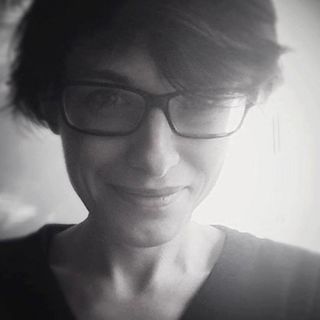
Deborah Heissler is a contemporary French author. Her works of poetry have garnered critical acclaim and numerous awards, including the Louis Guillaume Prose Poetry Award (2012), the Yvan Goll Francophone Poetry Award (2011) and the Bleustein-Blanchet Foundation Prize (2005).

Michel Deguy was a French poet and translator.
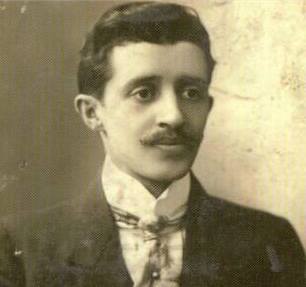
Louis Perceau was a 20th-century French polygraph. He used several pseudonyms including Helpey bibliographe poitevin, Dr. Ludovico Hernandez, Alexandre de Vérineau, Un vieux journaliste, Radeville et Deschamps, marquis Boniface de Richequeue, sometimes jointly with Fernand Fleuret.
Frédéric Jacques Temple was a French poet and writer. His work includes poems, novels, travel stories and essays.
